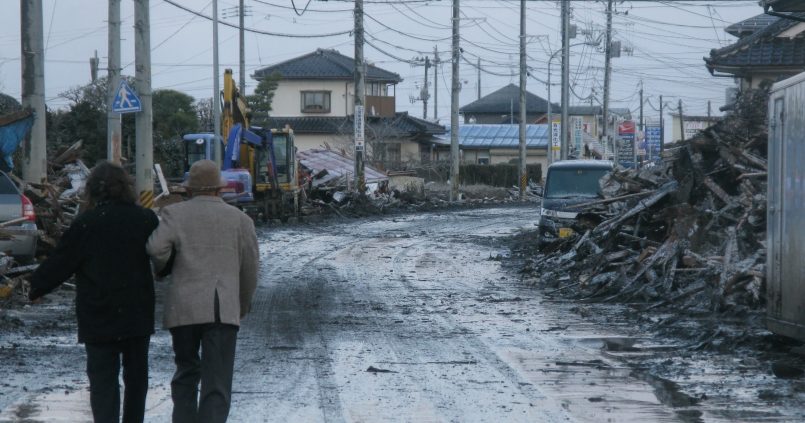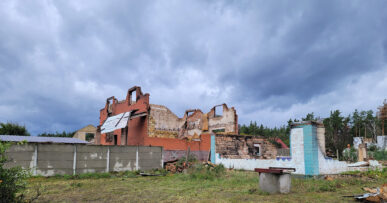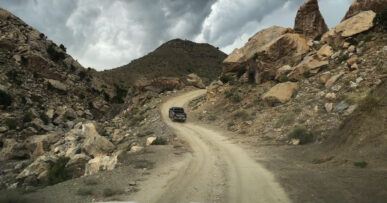- A Magnitude 8.9 Earthquake Rocks Tōhoku, Tsunami Devastates Sendai, State of Emergency Declared in Japan
- Reporting from Tokyo 3 Days After the Earthquake
- The Tōhoku Earthquake, Part 1: The Anatomy of Failure
- The Tōhoku Earthquake, Part 2: Fire and Water
- The Tōhoku Earthquake, Part 3: Fragile Civilization
SENDAI, Japan–I pick up a fragment of a small shell from a sandy beach. This brings back memories from 30 years ago, when I camped here. It was a sunny and warm summer day then. Today, the beach of Arahama is cold. This community was hit by a massive 10-meter tsunami last Friday. The area behind me looks as if a nuclear bomb blast just happened. Everything was wiped out. Debris is everywhere. Dusk is coming, and snow is starting to fall heavily, with a strong mountain wind. I cover my head with my jacket hood and start walking back fast through the quiet destruction. I started the day intending to investigate Sendai, which is a large, modern metropolis. According to our base team in California, Japanese seismographs here showed a whopping 170 percent of gravity (g) in the horizontal motion of the earthquake. I really doubt this number, because I hardly see any shaking damage in the area. Usually, at over 30 percent g, you would start to see cracks in buildings and failures in older construction. I just cannot imagine that this place experienced more than 20 percent g. The fault rupture was 150 kilometers away. At that distance, strong ground motions would diminish, even for a magnitude 9 event.
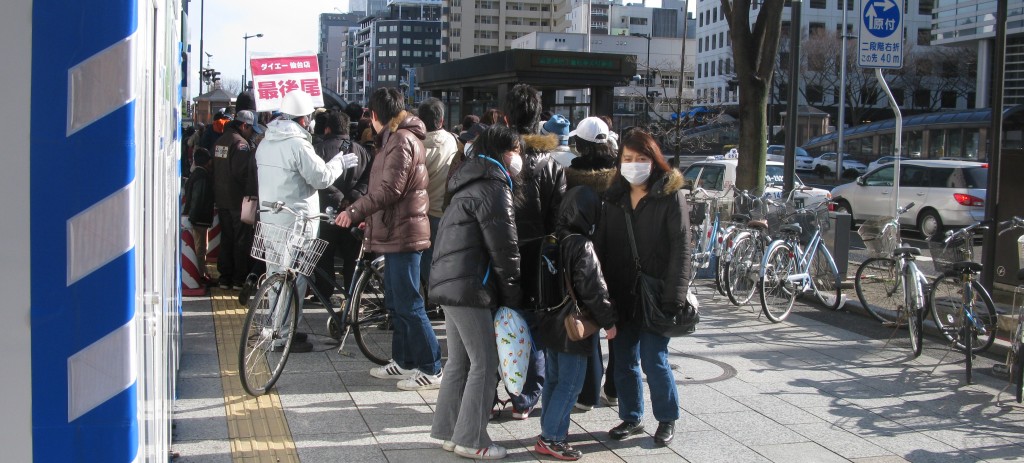
The odd thing about Sendai is that almost none of the stores are open. People are strolling around as if nothing unusual has happened, yet seeing closed shutters in the middle of a Wednesday is unreal. For the few open stores, people are lined up in long lines. What is really hurting this city is not direct earthquake damage, but lack of oil, food and other essentials. Stores cannot be open if there is nothing to sell. Damaged oil refineries and ports make it very difficult to have adequate oil in gas stations, and some gas stations cannot pump gas because of power outages. And because very few gas stations are open along highways and airports are closed, food and other essentials are not reaching this city. I have been living on dehydrated backpack food and instant noodles for the last few days. My mountain-climbing hobby is helping me meet basic needs. With the added stress of a constant threat of radiation fallout from the damaged Fukushima nuclear plant, people here are on edge. It feels like it is essentially the end of civilization as we know it.
I am now at the edge of the Wakabayashi district. This once-vibrant town does not exist any longer. It was destroyed by the tsunami. I need to find out why this town was destroyed. I know that large seawalls existed here. At the police checkpoint, an officer acknowledges my credentials, points in a direction, and says, “Just go straight for three kilometers. You will reach the Arahama beach. Come back by dusk and tell me why the seawall failed to protect my town.” The waves had reached 3 kilometers deep inland.
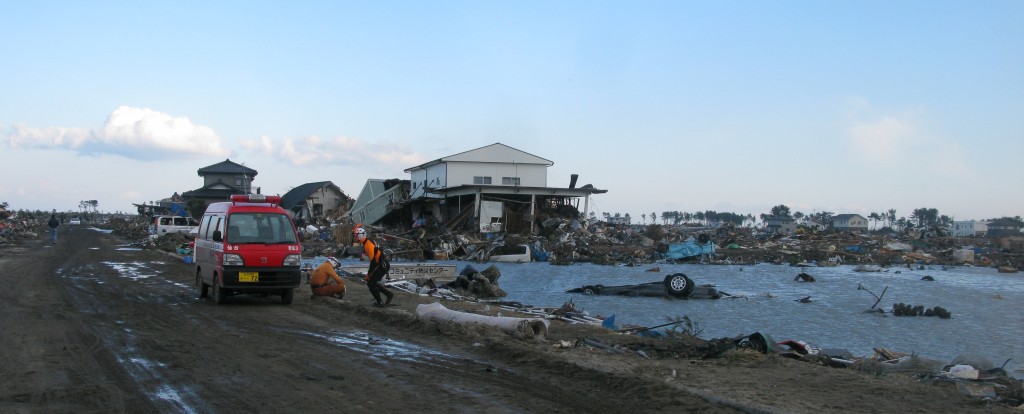
I start walking toward the destroyed town and beach that I visited as a boy. Nothing really has prepared me for what I see. I have been in many disasters, but this one is different. I see complete destruction. Along the road, I find mangled cars, houses, trees and shrines. The sun is shining on the lake of seawater left by the tsunami. Every so often, I come across a few souls walking among the debris. I see a lone dog, which walks right past me. I wonder how he survived the flood. I then come across an elderly couple. The wife is crying and clinging to her husband. Many people lost their lives here. The feeling of desolation is heavy. In the sea of destruction, there are still some buildings standing. They were all built with concrete or steel. All the wooden houses washed away–no exceptions. A solitary four-story concrete school stands unharmed. I see evidence of seismic strengthening with braces in the windows. These braces helped the structure withstand the tremendous forces from the tsunami and debris flow. I also see one large pine tree stuck in the second floor of the gymnasium. The waves reached about 7 to 10 meters here. At the very least, if students were above the third floor, hey would have survived.
Based on past observations of the failures and successes of structures, if anyone wants to build in areas with the potential for tsunamis, a few things should be considered. A structure should be engineered with concrete or steel. It should be a multistory building with a fast vertical escape route. The ground floor should be free of concrete or rigid walls so that water and debris can flow through. If all structures are built this way, a community could be functional very rapidly after a tsunami rather than have to be totally rebuilt.

Next I enter a mangled pine tree forest, which was planted to slow down a tsunami. I find 7-meter-high seawalls stretched from horizon to horizon. The Japanese government has spent billions of dollars over the last several decades to build an elaborate seawall system along the country’s coastline. But the seawalls turned out to be simply too low for a 3- to 10-meter tsunami. Could a 10-meter-high wall save this town? Probably. But a 15-meter-high wave would wash over it. Any walls will eventually be overcome by nature. Over-reliance on seawalls will not mitigate the tsunami hazard. Buildings also need to be able to survive a tsunami. The Fukushima nuclear plant relied on a 5-meter-high seawall. The wall did not work for a 10-meter high tsunami, and eventually this failure caused a nuclear meltdown. A singular solution cannot address all the potential hazards. We engineers must design sustainable communities. To do that, a combination of solutions must be used, and we must understand all of nature’s forces. Designing alternative means to address nature’s forces is critical.
At last, I reach my childhood beach. It is totally desolate, and gentle waves are striking the sandy beach. I don’t see any debris here. I cannot believe that there was a massive tsunami just a few days earlier. I must be one of the first people to reach this beach, because I do not see any other footprints. Suddenly, a cold mountain wind starts blowing. A snowstorm is coming. I turn my back to the beach and head to shelter.
